
 As the first and best of the three official adaptations of H.G. Wells’ 1896 novel The Island of Dr. Moreau, Erle C. Kenton’s Island of Lost Souls brings the horror elements of the science-fiction tale to the forefront. The film remains chilling even today, despite having the most primitive of technology.
As the first and best of the three official adaptations of H.G. Wells’ 1896 novel The Island of Dr. Moreau, Erle C. Kenton’s Island of Lost Souls brings the horror elements of the science-fiction tale to the forefront. The film remains chilling even today, despite having the most primitive of technology.
Pomade-haired shipwreck victim Edward (Richard Arlen) is brought to the title tropical site where the arrogant, power-mad scientist Dr. Moreau (Charles Laughton, looking a little like Fat Hitler) rules over his House of Pain, a laboratory where he creates ungodly mutations of half-men/half-beasts. Some resemble wolves, simians, even owls; all cower at the crack of their maker’s whip.
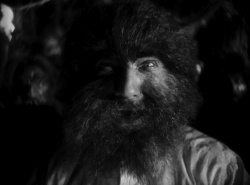 A victim of censorship, Island contains some crazy-ass ideas it has to dance around rather than discuss outright — namely, Moreau wanting to unleash his panther woman, Lota (Kathleen Burke), on his good-looking guest, Edward, to see what would happen if he would put his pee-pee into her hoohah until he had a big tickle. (Has the porn industry not leapt upon this idea yet?)
A victim of censorship, Island contains some crazy-ass ideas it has to dance around rather than discuss outright — namely, Moreau wanting to unleash his panther woman, Lota (Kathleen Burke), on his good-looking guest, Edward, to see what would happen if he would put his pee-pee into her hoohah until he had a big tickle. (Has the porn industry not leapt upon this idea yet?)
With expansive sets and excellent make-up effects, Island is a feast for the eyes, even in black and white. It’s also startlingly as relevant, with the particular issue of evolution still ridiculously as hot-button as ever. Perhaps one day, we as a society will be able to acknowledge the possibility of a higher power and let man fuck leopard whores freely and without judgment. One can hope. —Rod Lott

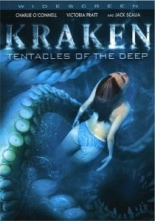
 Something else it has going for it are the leads. Maybe I’m just still in love with her from
Something else it has going for it are the leads. Maybe I’m just still in love with her from 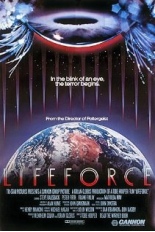
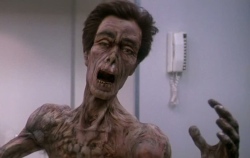 Cannon Films clearly didn’t know what it had signed on for. Lifeforce flopped, with reviews generally negative or worse (although Gene Siskel liked it). But aided through hindsight and extended editions, Lifeforce is a geek classic. Certainly no one involved phoned it in; Hooper’s direction (never better) captures the style and dry wit of the classic Hammer
Cannon Films clearly didn’t know what it had signed on for. Lifeforce flopped, with reviews generally negative or worse (although Gene Siskel liked it). But aided through hindsight and extended editions, Lifeforce is a geek classic. Certainly no one involved phoned it in; Hooper’s direction (never better) captures the style and dry wit of the classic Hammer 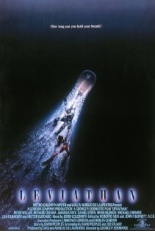
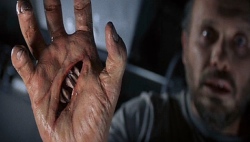 Leviathan does have some significant, although superficial-to-the-story differences from Alien, however. H.R. Giger famously designed the creature in Alien; Leviathan’s beast was created by the great Stan Winston, who unfortunately wasn’t doing his best work here. The early stages of the monster look cool, like a killer eel or something, but as it matures, it turns into an asymmetrical version of the Creature from the Black Lagoon-type character from
Leviathan does have some significant, although superficial-to-the-story differences from Alien, however. H.R. Giger famously designed the creature in Alien; Leviathan’s beast was created by the great Stan Winston, who unfortunately wasn’t doing his best work here. The early stages of the monster look cool, like a killer eel or something, but as it matures, it turns into an asymmetrical version of the Creature from the Black Lagoon-type character from 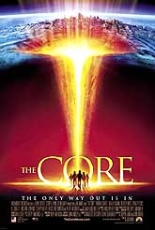
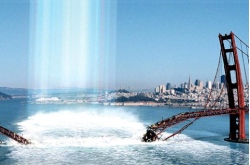 For a while anyway, The Core plays it straight enough that you just buy into it. It’s not until the mission is well under way that said suspension starts falling apart, probably because the movie is just too darned long. And the mission — its
For a while anyway, The Core plays it straight enough that you just buy into it. It’s not until the mission is well under way that said suspension starts falling apart, probably because the movie is just too darned long. And the mission — its